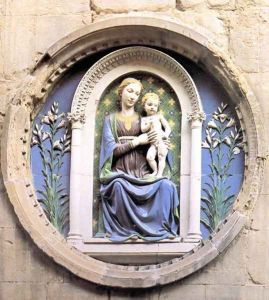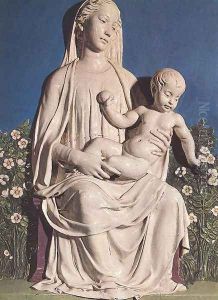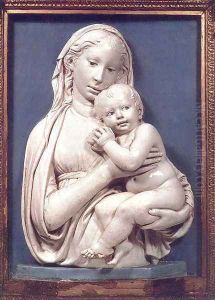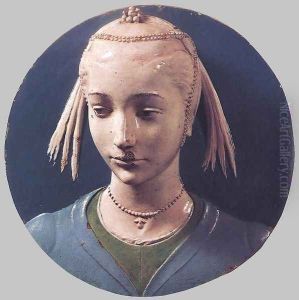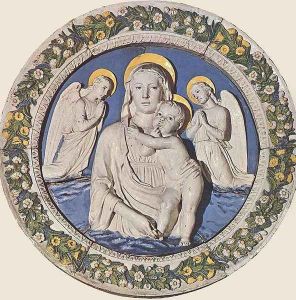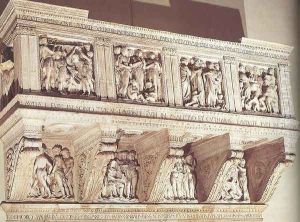Luca della Robbia Paintings
Luca della Robbia was a pioneering Italian sculptor from Florence, renowned for his innovation in the realm of ceramics, particularly his development of glazed terracotta. Born in either 1399 or 1400, della Robbia was an influential figure during the Italian Renaissance, a period marked by a vigorous revival of the arts, literature, and learning that mirrored the achievements of classical antiquity. His work is characterized by its vibrant colors, enduring finish, and an ability to withstand the elements, making it suitable for both indoor and outdoor use. Luca's contributions to art extend beyond his mastery of terracotta; he was also skilled in marble and bronze, showcasing his versatility as an artist.
Luca's early life was spent in Florence, a city that was at the heart of the Renaissance movement. He was apprenticed to a goldsmith, but his interests soon shifted to sculpture. His talent was evident early on, and he was taken under the wing of prominent artists of the time, which helped refine his skills and artistic vision. Among his most famous works are the Cantoria (Singing Gallery) for the Cathedral of Florence and the series of reliefs depicting the life of John the Baptist for the city's San Giovanni Baptistry.
Della Robbia's invention of a glazed terracotta technique was a significant breakthrough. This technique involved applying a glaze composed of lead, tin, and antimony to terracotta sculptures, which was then fired to create a glossy, protective surface. This innovation not only enhanced the aesthetic appeal of the sculptures but also rendered them more durable. The della Robbia family, including Luca's nephew Andrea and other descendants, continued to use and refine this technique, leaving a lasting legacy on the art of ceramics.
Throughout his life, Luca della Robbia's work was celebrated for its beauty, spiritual depth, and technical excellence. He was a devout Catholic, and his religious beliefs deeply influenced his art, imbuing it with a sense of piety and devotion that resonated with viewers. Despite his success, little is known about his personal life, as he was notoriously private.
Luca della Robbia died in 1482, having left behind a rich legacy that would influence generations of artists. His innovations in the use of glazed terracotta opened new possibilities in sculpture and decorative arts, marking him as one of the key figures of the Renaissance. Today, his works are preserved in numerous museums and collections around the world, standing as testament to his artistic genius and technical prowess.
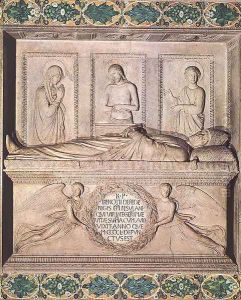
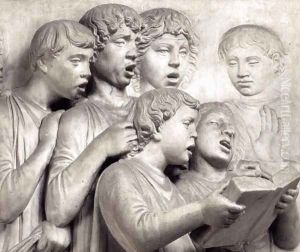
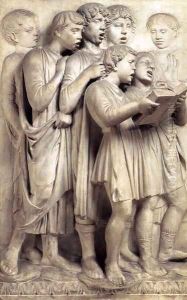
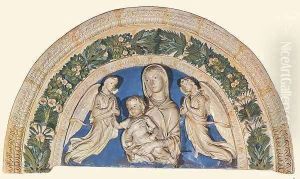
![Monument to Bishop Benozzo Federighi [detail: 1]](https://www.niceartgallery.com/imgs/263318/s/luca-della-robbia-monument-to-bishop-benozzo-federighi-detail-1-a2d45852.jpg)
![Cantoria [detail: 3]](https://www.niceartgallery.com/imgs/263317/s/luca-della-robbia-cantoria-detail-3-e14bce9c.jpg)
![Cantoria [detail: 2]](https://www.niceartgallery.com/imgs/263316/s/luca-della-robbia-cantoria-detail-2-36a94ec4.jpg)
![Cantoria [detail: 1]](https://www.niceartgallery.com/imgs/263315/s/luca-della-robbia-cantoria-detail-1-95ffc86d.jpg)
![Cantoria [detail: 4]](https://www.niceartgallery.com/imgs/263314/s/luca-della-robbia-cantoria-detail-4-421d4835.jpg)
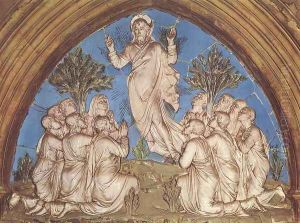
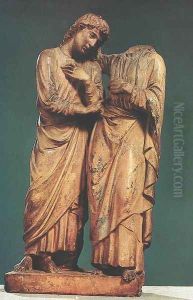
![Madonna of the Apple [detail: 1]](https://www.niceartgallery.com/imgs/263311/s/luca-della-robbia-madonna-of-the-apple-detail-1-7c97c58f.jpg)
